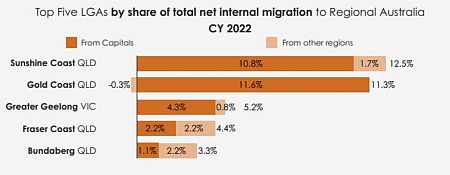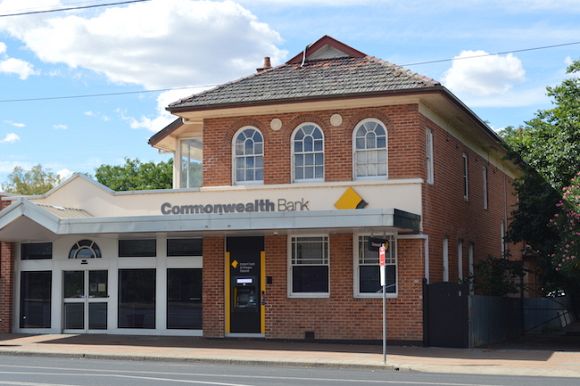Despite a promise not to close regional branches, the Commonwealth Bank is bending the rules on the definition of 'regional' and closing yet another branch. Dale Webster reports.
THE COMMONWEALTH BANK (CBA) is closing a branch in an area it has itself labelled one of Australia’s most popular destinations for regional migration, breaking its pledge not to shut any regional branches while a senate inquiry into the impact of bank closures is in progress.
CBA will close its Nerang branch on the Gold Coast on 26 May after receiving positive publicity in February for being the only major bank to agree in full to the Senate Committee’s request for a moratorium on regional closures until it reports in December.
CBA is claiming the branch is not “regional” despite declaring the Gold Coast a “hotspot” for people moving from metropolitan to regional areas in its latest Regional Movers Index report, which it publishes quarterly in partnership with the Regional Australia Institute.
The report states that Australian Bureau of Statistics (ABS) classifications are used to determine capital city and regional boundaries in the data, but the Commonwealth has chosen to use a different interpretation in its Nerang decision.
A spokeswoman said:
CBA has not broken its pledge to pause closures in regional Australia while the Senate Inquiry is underway.
Per the Accessibility/Remoteness Index of Australia, which is the leading indicator of remoteness in Australia used by the ABS, Nerang, Queensland is classified as a major metropolitan location (specifically, ‘Major Cities of Australia’).
The Commonwealth Bank’s interpretation leaves Australia’s three biggest regional cities – Geelong, Wollongong and Newcastle – as well as the more densely populated regions along the east coast and places such as Bateau Bay, Gosford, Maitland, Murwillumbah, Raymond Terrace, Katoomba, Bacchus Marsh and Mandurah still vulnerable to the loss of their Commonwealth banks this year as they fall in the same category.
The Gold Coast was listed as the second-highest destination for regional migration in the most recent Regional Movers Index, which is based solely on Commonwealth Bank data.
Commonwealth Bank Executive General Manager for Regional and Agribusiness Banking Paul Fowler said when the latest data was released in March that the figures confirm regional hubs – including the Gold Coast – continue to attract “thousands of metro movers”.
He said:
“Many are attracted by the opportunities that our thriving regional economies present. While it’s been a difficult year for many businesses who have faced significant challenges, including labour shortages and inflationary pressures, industries such as healthcare, manufacturing and agriculture are growing strongly and regional businesses are investing more to sustain increasing demand for their products and services.”

The Commonwealth’s stance that the Gold Coast is not regional is also in conflict with the Regional Australia Institute’s definition of the term.
Its website states:
‘...“regional Australia” refers to everything beyond the major capital cities of Sydney, Melbourne, Brisbane, Perth, Adelaide and Canberra — from remote Aboriginal and Torres Strait Islander communities, to inland and coastal towns and bustling regional hubs.’
Commenting on the Regional Movers Index data in August last year, Regional Australia Institute Chief Executive Officer Liz Ritchie said in a Commonwealth Bank media release that people were ‘voting with their feet’ and looking for the good life in regional Australia — in particular, on the Gold Coast.
The media release says:
‘The major coastal cities close to the east coast capitals are the main destinations for city-dwellers making a regional move — Gold Coast welcomed 11% of all capital-city movers, Sunshine Coast 6%, Greater Geelong 4%, Wollongong 2% and Lake Macquarie 2%.’
The Commonwealth has been asked if it accepts that its interpretation of “regional” is not in keeping with the spirit of the Senate Committee's request not to close regional branches while deliberations on the impacts of regional closures are still in progress.
So far, there has been no response.
Dale Webster is an inaugural recipient of a Walkley Foundation Grant for Freelance Journalism on Regional Australia. She publishes independently through her own title, 'The Regional'. You can follow Dale on Twitter @TheRegional_au.
Related Articles
 This work is licensed under a Creative Commons Attribution-NonCommercial-NoDerivs 3.0 Australia License
This work is licensed under a Creative Commons Attribution-NonCommercial-NoDerivs 3.0 Australia License
Support independent journalism Subscribe to IA.














